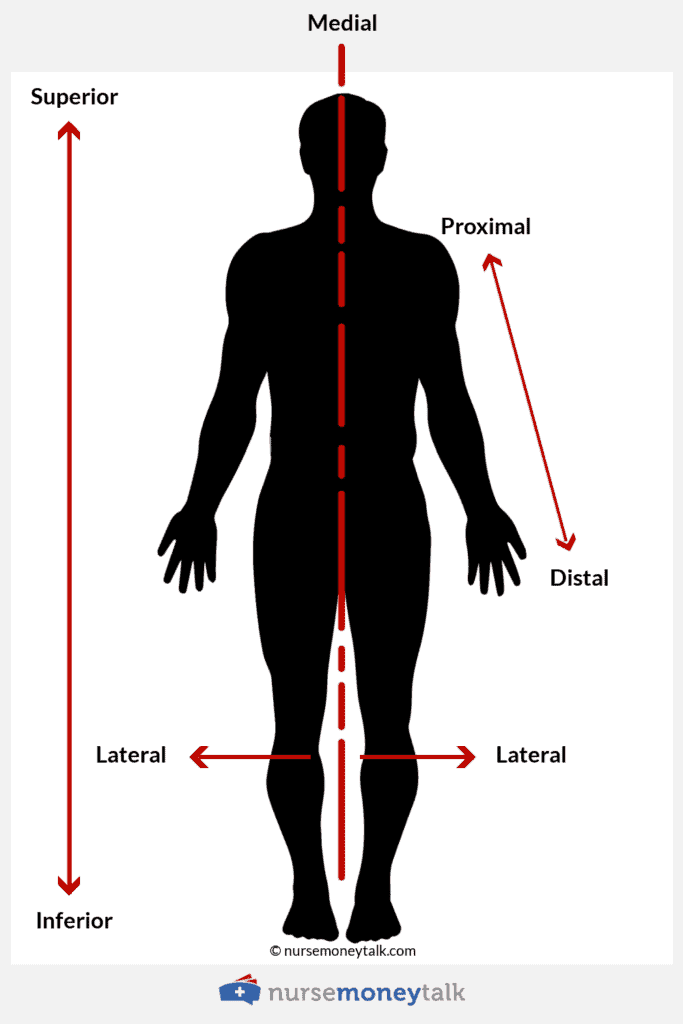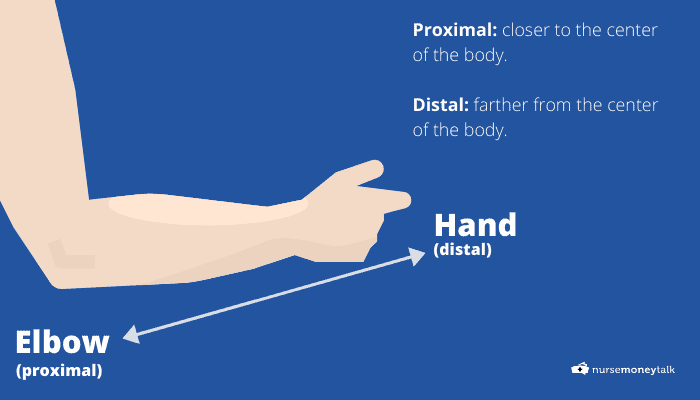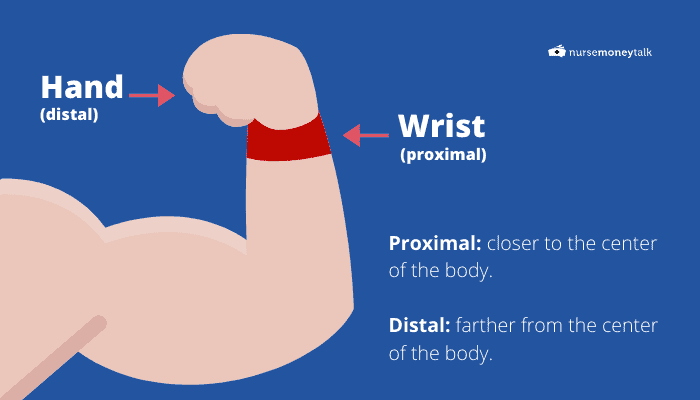If you’re a nursing student or even a registered nurse who is finding it difficult to remember the meaning for the terms proximal and distal, do not fret.
My guide will clarify these terms, give real-world examples and provide you with tips for remembering what these terms mean.
*Disclosure: This article on proximal vs distal may contain affiliate links. If you click and make a purchase, I may receive a commission. For more info, please see my disclaimer.
Difference Between Proximal vs Distal Explained
What Does Proximal Mean in Human Anatomy?
The definition for proximal is easy to remember when you think how closely the term is related to the word proximity.
In other words, a body part described as proximal is close to a pre-determined starting point. Anybody part that is near the body’s central point, which is usually defined as the torso, is said to be proximal to it.
What Does Distal Mean in Human Anatomy?
On the other hand, distal is equally easy to understand when you match it to the word distant. A body part that is distal to another part is further from the central point of the body or the trunk.
Diagram
Here’s a diagram that illustrates directional references when it comes to a proximal end vs distal end. To help further illustrate these points I’ve included references for superior vs inferior and medial vs lateral.
I didn’t include anterior (ventral) and posterior (dorsal) illustrations since I don’t think those are as misunderstood as some of the others. If you would like me to create one let me know in the comments.

How Do the Terms Proximal and Distal Relate to Each Other?
Keep in mind that proximal and distal can only be used in describing body structures that have a point of origin and an ending, such as limbs (appendage) or even blood vessels.
For example, an upper or lower limb originates from the torso, meaning that the parts closest to the torso are proximal to those that are further away.
However, in some rare cases, these terms can be used to describe smaller structures in which the torso is not considered to be the center.
For example, when discussing the foot, you might say that the phalange is distal to the metatarsal bone because it is further from its point of origin, which would be the ankle bones.
Examples of Proximal and Distal Sites in Nursing
As is often the case, learning textbook definitions for nursing terminology is far different from experiencing these terms in the real world.
If you’re at a clinical experience or even working a nursing shift, you need to understand the key differences between the terms proximal and distal to provide life-saving care in certain circumstances.
Here are two examples to help you better understand how to use these terms.
Is the Hand Proximal to the Elbow in Human Anatomy?

The answer is that the elbow is proximal while the hand is distal. Here’s the reason why. When considering this question, it’s important to consider the point of origin first. In this case, the torso is seen as the point of origin, making the hand further away from the trunk of the body than the elbow is.
Therefore, you would have to say that the elbow is proximal while the hand is distal.
Is the Wrist Proximal to the Hand in Anatomical Position?

In this example, we’re looking at two body parts that are closer together on the upper limb. Because the wrist is still nearer to the trunk of the body than the hand is, it’s said to be proximal to the hand while the hand is a distal body part.
Clearing Up the Confusion
With so many anatomical terms to remember when it comes to human anatomy, there is no need to let proximal and distal definitions throw you off anymore.
Do you have any other tips for keeping these directional terms clear in your mind? Comment below with your best hints and suggestions.
Related Articles to Proximal vs Distal
Frequently Asked Questions
-
Does knowing these anatomical terms help with patient care?
The terms covered here (along with a lot of other terminologies are frequently used by both nurses and medical providers. Because of that, it would be really hard to provide effective and safe patient care without some understanding of the lingo.


Thank you! Like you, I obtained a business degree and now I am taking pre-reqs for nursing. Thank you for this clarification
You’re welcome. Glad you found the article helpful.